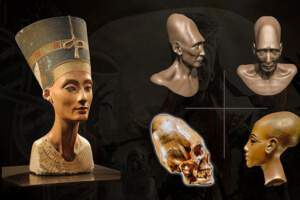Homo Capensis By Robert Broom
Homo Capensis by Robert Broom
Homo Capensis, Robert Broom, Human Evolution, Prehistoric Species, Lost History, Homo Capensis Discovery, Evolutionary Theories, Ancient Civilizations, Missing Links, Fossil Discoveries
The Mystery of Homo Capensis
Homo Capensis, a term coined by Robert Broom, challenges our understanding of human evolution. This species intrigues scientists and researchers due to its unusual features. Broom’s theory suggests that Homo Capensis may have lived alongside early hominids, but evidence remains scarce. This article dives into Broom’s theories and explores their implications for human history.
Who Was Robert Broom?
Robert Broom was a prominent South African paleoanthropologist. He contributed significantly to the study of early human fossils. Broom’s discoveries, like those of Australopithecus africanus, changed the field of human evolution. His work focused on the origins of humankind and the possible existence of Homo Capensis. His theory, although controversial, continues to spark debate in the field.
What is Homo Capensis?
Homo Capensis refers to a species with distinct physical features. Broom proposed that the species had an elongated skull, which could have been a result of cranial deformation. This idea suggests that Homo Capensis might have had a civilization advanced enough to manipulate their biology. Broom’s hypothesis has raised questions about the origins of human-like species.
The Discovery of Homo Capensis Fossils
While Broom never found complete Homo Capensis fossils, he discovered several skull fragments. These fragments were found in South Africa, where Broom conducted most of his work. The skulls showed an unusual shape, unlike known hominids. These findings led Broom to propose the theory of Homo Capensis, despite the lack of a full fossil specimen.
The Role of Homo Capensis in Human Evolution
The role of Homo Capensis in human evolution is unclear. While mainstream scientists focus on Australopithecus and Homo habilis as direct ancestors, Broom’s theory suggests Homo Capensis coexisted with these species. Broom believed that Homo Capensis may have influenced the development of Homo sapiens. However, no solid evidence has proven this idea, and skepticism remains high.
The Controversy Surrounding Homo Capensis
The concept of Homo Capensis remains controversial. Many researchers dismiss Broom’s theory due to a lack of conclusive evidence. Furthermore, the idea of an advanced civilization in prehistory is difficult to prove. Critics argue that cranial deformation could explain the skull shapes without invoking a new species. Despite this, Broom’s ideas still generate discussion about the possibilities of early human evolution.
Homo Capensis and Its Relationship to Other Hominids
Some speculate that Homo Capensis was part of a larger, diverse group of early hominids. Over time, many species evolved, while others disappeared. Could Homo Capensis have been one of those lost branches? The absence of clear fossil evidence leaves this question unanswered. Nevertheless, it highlights the complexity of human evolution.
The Legacy of Robert Broom’s Work
Broom’s contributions to paleoanthropology are undeniable. Though his theories about Homo Capensis have not been widely accepted, they remain significant in evolutionary studies. His discoveries helped shape the understanding of early human species. Today, his work continues to inspire researchers who seek to understand the early chapters of human history.
What Can We Learn from Homo Capensis?
The mystery of Homo Capensis challenges our current understanding of human evolution. The possibility of advanced prehistoric species raises questions about our origins. While evidence for Homo Capensis is scarce, the theory still sparks curiosity about ancient civilizations. We may never fully understand this species, but it provides an intriguing glimpse into humanity’s past.
For more on Homo Capensis and other fascinating evolutionary theories, visit the Jordan Maxwell website for expert insights and in-depth discussions on human history and ancient knowledge.







 Jordan Maxwell Videos
Jordan Maxwell Videos